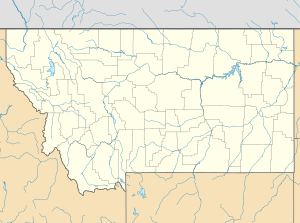| Montana World War II Army Airfields | |
|---|---|
| Part of World War II | |
Map of Montana World War II Army Airfields | |
| Type | Army airfields |
| Site history | |
| Built | 1940-1944 |
| In use | 1940–present |
During World War II, the United States Army Air Forces (USAAF) established numerous airfields in Montana for training pilots and aircrews of USAAF fighters and bombers.
Most of these airfields were under the command of Second Air Force or the Army Air Forces Training Command (AAFTC) (a predecessor of the current-day United States Air Force Air Education and Training Command). However, the other USAAF support commands (Air Technical Service Command (ATSC); Air Transport Command (ATC) or Troop Carrier Command) commanded a significant number of airfields in support roles.
It is still possible to find remnants of these wartime airfields. Many were converted into municipal airports, returned to agriculture, or retained as United States Air Force installations that served as front-line bases during the Cold War. Hundreds of the temporary buildings that were used survive today, and are being used for other purposes.



